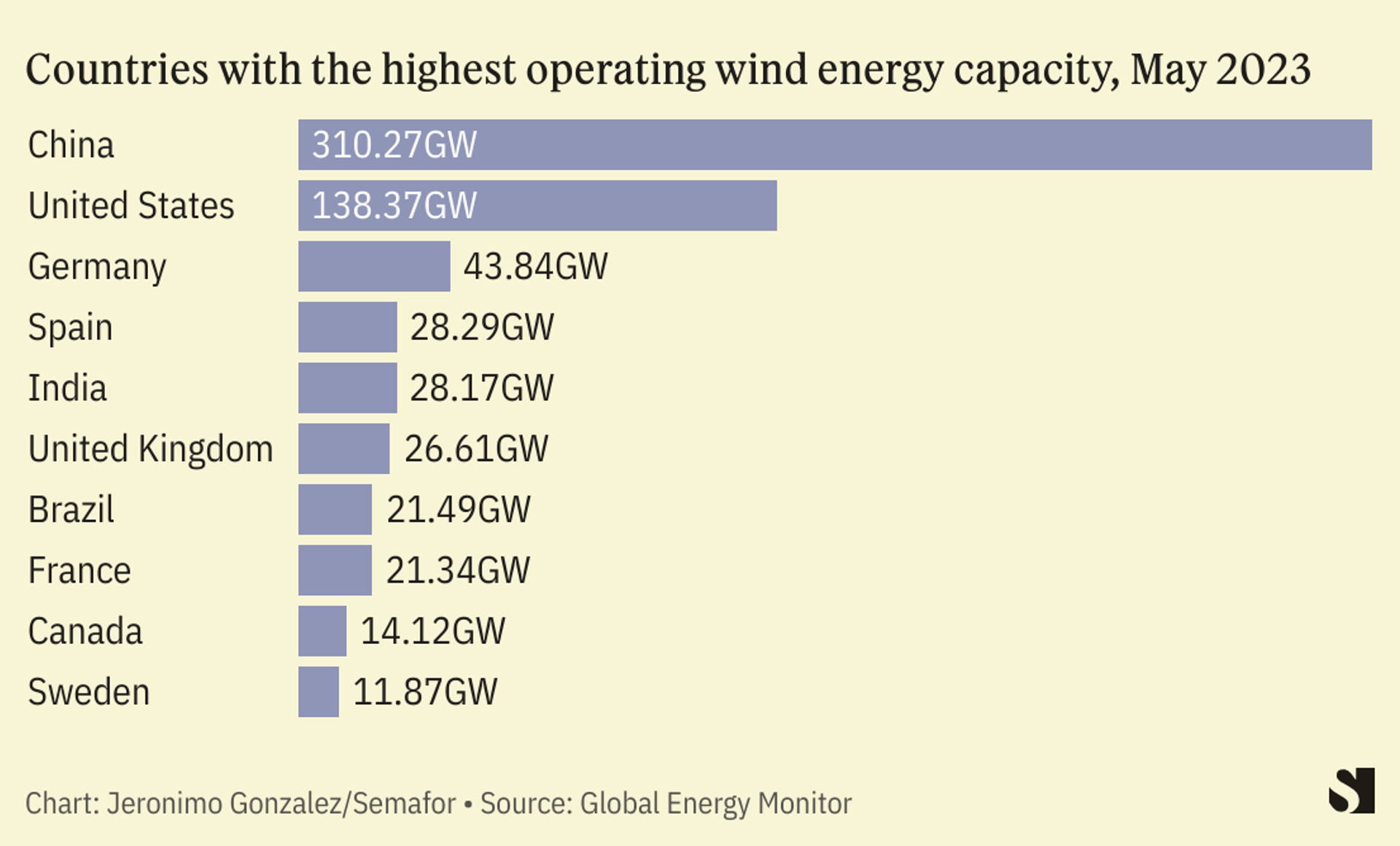The News
The wind energy sector has been blighted by rising financing and materials costs, fierce competition, and expensive technical problems that have led to heavy losses despite demand for energy soaring. Plummeting prices for other forms of renewable energy have also piled on to the industry’s problems.
We’ve gathered reporting and analysis on why the industry is struggling and where it’s succeeding.
Insights
- Soaring temperatures across Europe and the continent’s efforts to wean its economies from dependance on Russian oil and gas have underscored the need for wind energy. However the combination of plummeting prices for renewable energy coupled with soaring costs on debt have made large offshore wind projects inviable. “This means that price of renewable energy regrettably must come up temporarily after years of steep decline,” the head of Danish energy giant Ørsted said. — Bloomberg
- Wind turbine producers have struggled with rising steel prices, inflation, and low quality production. Shares of Siemens Energy plunged by close to 30% last month after the company announced technical faults in its turbine business, affecting some of the world’s biggest wind developers. “Turbine prices fell sharply in 2017, which was then followed by the industry introducing new technology and turning to emerging markets for suppliers to keep costs down,” an analyst at JPMorgan said. “Some of the quality and design issues in the industry now are the result of that.” — Financial Times
- Earlier this year, the White House announced plans to deploy 30 gigawatts of offshore wind energy capacity by 2030, enough to power roughly 10 millions homes. Reaching the goal will be a tough task: As of July, there are just two operational wind projects in the U.S. which combined produce 0.14% of the government’s 2030 goal. Earlier this month, two major projects were scrapped because of a lack of bids and cost issues. Developers “look at projects and the agreed upon price and are not seeing a path to profitability,” an expert at the Centre for Strategic and International Studies said. — Heatmap

- Meanwhile, China’s wind industry is buoyant. The country’s total wind capacity — both onshore and offshore — now surpasses 310 gigawatts, double its 2017 level and roughly equivalent to the next seven highest producing countries combined. Its capacity is set to double again before 2025 as it seeks to add another 371 GW by then. “This new data provides unrivalled granularity about China’s jaw-dropping surge” in wind capacity, Dorothy Mei, a project manager at Global Energy Monitor said, referring to data published last month. — The Guardian
AD
